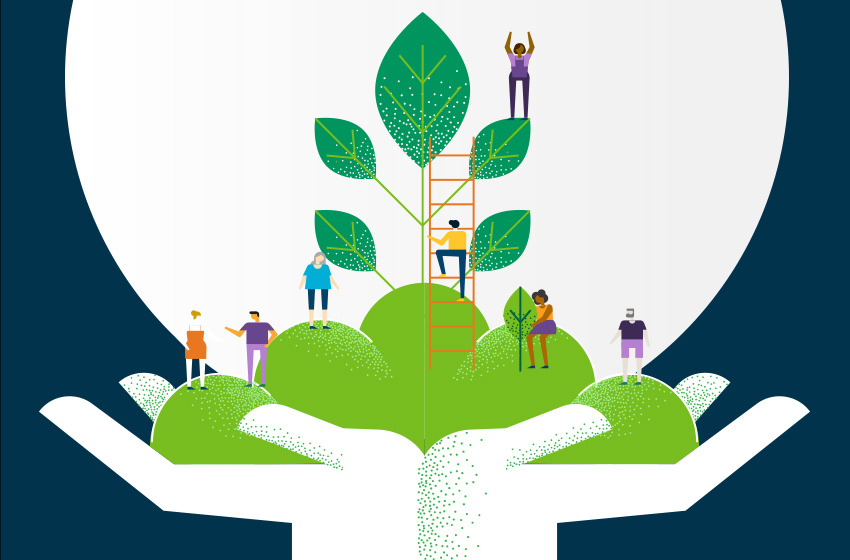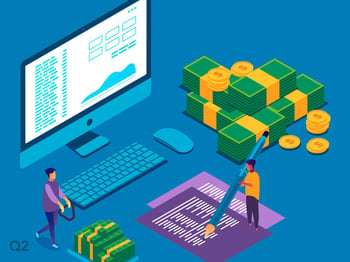With 2022 just around the corner and the pandemic slowing significantly, it’s time for financial institutions (FIs) to take a forward look at their small business lending strategy. FIs, without a doubt, have made and will continue to make a difference in the small business rebound.
Clearly, opportunities for expanded relationships exist. Of small businesses that applied to the U.S. SBA’s Payroll Protection Program (PPP) through a financial institution, 83% of small bank applicants had an existing relationship.1 Also, FIs now firmly understand that the pandemic produced a permanent shift from in-person lending to digital.
To move ahead with optimum lending outcomes, three PPP lessons stand out for digital lending success moving forward. Given that credit needs will continue into 2022, both from small businesses trying to rebuild and those looking to grow, these lessons are important to apply much sooner than later:
Lesson 1: Deliver consistently fast speed of enrollment and decisioning.
Lesson 2: Provide topline customer engagement experiences.
Lesson 3: Use technology to mitigate loan fraud.
Lesson 1: Deliver consistently fast speed of enrollment and decisioning.
Small businesses – from mom and pops to larger ones – want to receive loans and other credit at the speed of business today. Surveys and interviews in late 2021 indicate there is a strong desire for small businesses to continue to seek FI assistance. However, they have expectations. Most small businesses, regardless of size, are seeking a “fully digital experience.”2 Over 50% of them want to apply for loans online, and despite their FI preference, they believe “nonbank providers” offer a superior experience with greater speed of decisioning and funding.2
Lesson 2: Provide topline customer engagement experiences.
FIs need to provide value through a great digital experience; one offering the ease and seamlessness that UX-focused digital banking can bring. Right now, small businesses believe their digital banking experiences are hampered by multiple system logins. Well over 50% want a seamless experience across their FI accounts and products, and when it comes to lending, 60% are interested in applying for a loan within their online banking platform as opposed to having to do so in a different lending platform.
Lesson 3: Use technology to mitigate loan fraud.
When a bank or credit union adds effective security and fraud protection to its overall customer experience, they offer a powerful offering to small businesses. Incidents of fraud greatly increased during the pandemic – and they remain high at the end of 2021. Offering technology that combats latency issues, quickly discerns data anomalies, and alerts FI staff of abnormal behavior is necessary, as are other prevention methods like automating data access and workflows to reduce human error risk.
Final takeaways
An automated and highly functioning end-to-end process – one seamlessly running from initial application to approval in minutes – can be established and carried into standard loan offerings in 2022 and beyond. It’s also apparent to many FIs that a cloud-based, API-driven model is the one to embrace for rapidly realized ROI.
Leading FIs recognize that to grow in a lower interest environment, they must process loans at a faster, higher-volume pace than in the past. Meanwhile, any FI willing to build relationships with automated lending technology will be ready to better assist small businesses at scale as they return to growth.
Fintech is here to stay and 2022 presents further opportunity for FIs to work with fintechs to improve business, according to a late 2021 Economist Impact report, What is shaping the ecosystem of small business lending?
The report found the landscape is rapidly shifting in small business lending where “partnership thinking” is increasingly the norm, enabling small business lenders to move more quickly, effectively, and at scale with the help of technology. If your FI hasn’t explored the potential of a partner approach for effective digital lending, it may be worth stronger consideration.
Resources
Q2 eBook: 3 PPP lessons to learn for future lending success
Economist Impact Report: What is shaping the ecosystem of small business lending?
4 blogs that tell the small business lending story for 2022
Q2 has produced a number of blogs on small business lending since the pandemic began. You may find these informative as you assess the small business lending market and seek ways to take advantage of evolving opportunities.
What’s ahead for small business lending: better or worse times?
Small Business Lending: A Tale of Two Years
FIs: Stay Relevant in Lending with a Digital Approach
SMB Lending Fraud is Impacting Institutions – Aite-Novarica Group
1The Federal Reserve Banks’ 2021 Report on Employer Firms based on the Small Business Credit Survey, Q1 2021
2Aite-Novarica Group Survey of 1,004 U.S. Small-business Financial Decision-makers, Q3 2021




